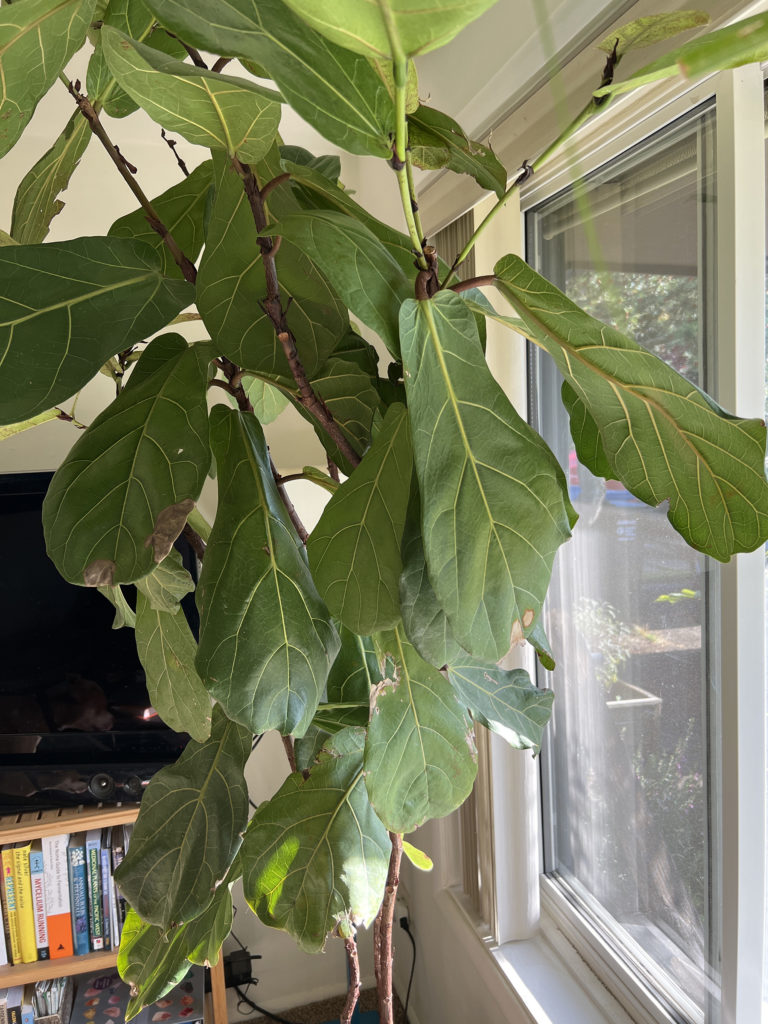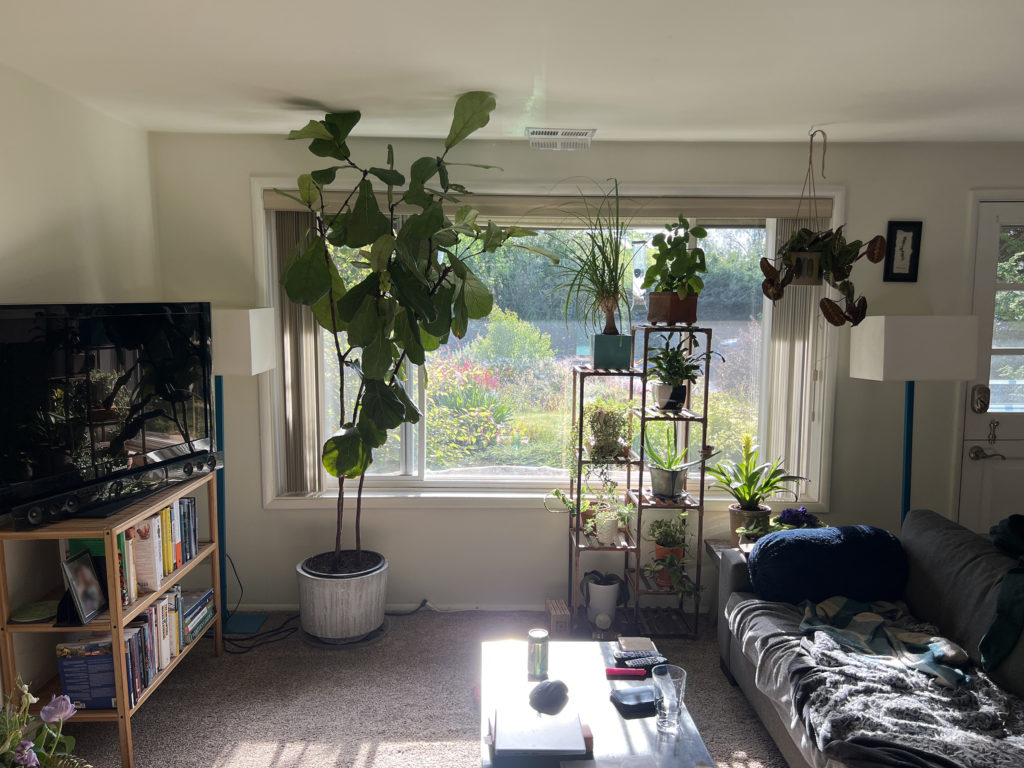Fiddle leaf fig concerns
Plant: Fiddle leaf fig (Ficus lyrata)
How long have you had the plant? 6 months to 1 year.
Concerns:
Ever since I inherited this from a friend, the leaves have been light green and pointing downward, not vibrant green and horizontal.
I recently cut the tops off and it’s growing well, but the new leaves are also light green (though not as droopy).
The leaves also seem somewhat brittle and crispy instead of soft like the ones I see at the plant store. Can the old leaves be fixed?

Light Situation:

How do you determine WHEN to water: I follow the schedule I was told/researched for this plant – about once a week.
Describe HOW you water: Fully soak the soil, letting excess drain away.
Other notes: I spritz it with water a few times a week for humidity. It is below a ceiling heat vent but I put a diverter on it to direct the heat away.
What fertilizer do you use? I recently started using worm castings (homemade). I repotted this in the spring and put some worm castings in with the new soil that one time.
When was the last time you repotted? Less than 6 months ago.
Darryl
Thanks for the photos and info! This is a lovely fiddle leaf fig that can be a great long-term plant.
Environment
This is an excellent window for a fiddle leaf fig. The light situation will yield good growth potential for you.
Effort
If the soil reaches just beyond halfway dry in about a week’s time, then a weekly watering is fine but if you happen to go through a whole week of cloudy weather, the soil may not reach halfway dry by the end of the week. Conversely, if you get 5 clear, sunny days in a row, the soil could reach the time to water sooner than a week. The point is, if you approach watering by observing the soil dryness, then you can water in a responsive way rather than by strictly adhering to a schedule.
Misting the plant is unnecessary so you can do it if you enjoy it, but don’t feel obligated.
Worm castings is not a good long-term fertilizer as it may not contain a good ratio of NPK and might be lacking in some of the other micronutrients necessary for plant growth. If you want a good long-term fertilizer, here are my suggestions.
Expectations
Let me address each of your leaf concerns individually:
‘leaves have been light green; not vibrant’
Using a good fertilizer on a regular basis will help leaves remain more green for longer but any individual leaf will eventually die off as new ones grow. Even if you begin using fertilizer now, the current leaves may not become much greener than they are now – but they actually don’t look too bad to me.
‘leaves pointing downward; not horizontal’
From my assessment of your plant, the way your leaves are pointed is within normal parameters – it does not indicate anything wrong with your plant. A fiddle leaf fig’s leaves may be oriented in all kinds of directions. Typically, the sets of leaves closest to the growing tip will be the most horizontal while the lower ones face downwards. Plants fresh from the nursery will also generally have more upright leaves because their light is evenly distributed from the top.
‘leaves seem brittle/crispy’
These leaves look fine to me. If you want them to look cleaner, you can use insecticidal soap and a microfiber cloth to wipe them down.
‘can the old leaves be fixed’
No but you should accept that leaves have a limited lifespan. Do not fall into the trap of thinking proper care equals perfect leaves forever. Given your environmental conditions and care, your plant will grow as Nature intends – older leaves will continually die as new ones grow.
You’ve got a great window space – start using a good fertilizer and your plant will grow well in the long-term.
For more great resources, I think you’ll enjoy my book and online course.
Tired of your houseplants dying on you?
Sign up and I’ll do my best to help them live their best lives!